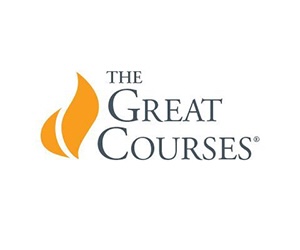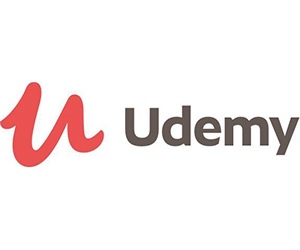Origin of MBA Education

MBA education originated in the United States. It is generally believed that the earliest management school in the United States was The Wharton School of Finance and Economics established in the University of Pennsylvania in 1881; the MBA Program was later born at Harvard University. At the beginning of management education, the main emphasis was on the cultivation of temperament and character, rather than actual professional knowledge. For a while, he did not receive a enthusiastic response from the business community. By the end of the 19th century and the beginning of the 20th century, the introduction of management education in the industrial and commercial circles had a preliminary development. After the end of the Second World War, management education developed vigorously. This was mainly due to the obvious separation of ownership and management rights of American companies in the two world wars, which created a rapidly expanding demand for corporate managers. At the end of the war, the economy was transformed into a peace-time economy, people's consumption power was released in large quantities, and the market was booming, which brought a lot of opportunities for enterprises to expand. Many veterans entered universities under the Veterans Education Act, and many of them chose to study for an MBA in the business school. Harvard University’s glorious 1947 class is the leader of this "extraordinary generation."
The sudden increase in demand finally exposed many weaknesses in the goals, methods, and academic levels of American management schools. The comprehensive report of the American Foundation and the Ford Foundation in 1958 unanimously clarified the practical nature of management education and advocated strengthening quantitative analysis. Ability, and basically formed a structured curriculum system with a wide range of influence. After that, in the 1960s and 1970s, the focus of American education was on MBA. The number of MBA degrees awarded in the United States each year reached more than 20% of the total number of master degrees awarded, once again entering an unprecedented period of vigorous development. In the 1980s, represented by the 1984 Harvard Business Review’s criticism of “The School of Management is not satisfactory for management education, it should bear certain responsibility for the decline in the United States’ international competitiveness”. The dean of the college deeply reflected. But this time did not move towards a unified model, but towards their own exploration, which formed the management education innovation in the 1980s, including: internationalization; curriculum integration; strengthening the training of leadership, team awareness and management skills Enrich students' scientific and technological knowledge; attach importance to the ethics of enterprises and entrepreneurs; network university and distance teaching practice (Virtual Bschool); etc.
The Harvard Business School, the world's most famous business school, pioneered the teaching method of case analysis-that is, using real-world case analysis instead of excessive reliance on academic theories. This method is still the basis of the MBA program, so the Harvard Business School MBA education is regarded as the real beginning of the world's MBA education. In the United States, MBA study includes a two-year course. During the one-month summer vacation between the first academic year and the second academic year, students can conduct internship activities. In the first year, students study core business subjects, which are compulsory courses, including finance, marketing, general management, operations management, and accounting. In the second year, students can choose some elective subjects they want to learn. The most popular majors among the elective courses are: Strategic Management, Finance, Accounting, and Marketing. These are all practical majors. MBA students are generally between 20 and 30 years old at the time of admission, and have 2 to 4 years of work experience.
The development of European MBA was initially hindered by government regulations. In many European countries, the government does not allow socially funded universities to establish "professional" business courses. This situation continued until the 1950s. A group of entrepreneurs in France began to establish private business schools to provide a distinctive European MBA education. The INSEAD Business School in Fontainebleau, France was established in 1958. The Swiss IMEDE Business School (ie IMD) was also established in Lausanne, Switzerland a few years later. This European-style MBA is different from the United States in that it only has one academic year. The candidate must be close to 30 years old or in his early 30s. Therefore, it can bring more past management experience into the classroom. This is also similar to American business. The college is different. From the very beginning, these European business schools have paid special attention to international comprehensive management education. The courses they designed not only integrate practical skills, but also emphasize the learning of global culture and business knowledge. European business schools also use case studies, but they encourage team-based project cooperation. The British government's intention to establish a "center of excellence in business teaching and research" led to the establishment of London Business School and Manchester Business School in 1964. Both business schools adopt the two-year full-time teaching model in the United States. Business schools such as Cranfield, Warwick (Warwick), Warwick, and Lancaster have also set up MBA programs in the UK, and they adopt the European one-year academic system.
However, European business schools have had only a small impact on the dominance of the United States in the field of MBA education. From the 1960s to the 1970s, more Europeans chose to study MBA in the United States instead of Europe. By 1979, the United States had 500 MBA programs, while Europe had only a few. All these changes were due to a contemptuous report by Professor Charles Handy, which made the British government suddenly aware of the serious imbalance in British and American business education. In 1979, the UK broke the monopoly of the London Business School and Manchester Business School and allowed any British university to open its own MBA program. France took the same steps in the early 1980s. Finally, Germany also adopted this view in 1998. In the field of MBA education, the United States still stands out, with 600 MBA courses and 70,000 full-time MBA students. However, Europe is also catching up. There are more than 100 business schools in the UK, more than 70 in France, 50 in Spain, and 20 in Germany. Today, there are about 10,000 full-time MBA students and 15,000 part-time MBA students in Europe.







